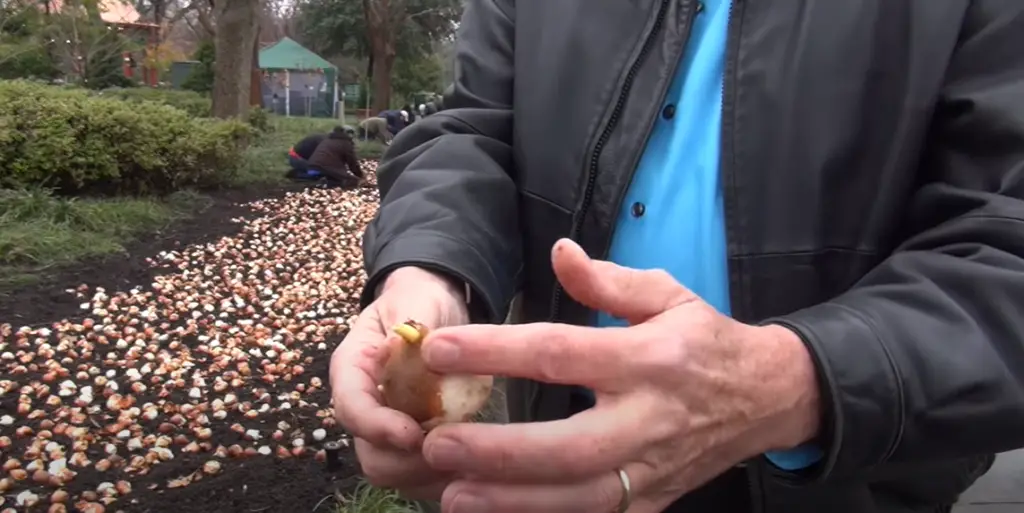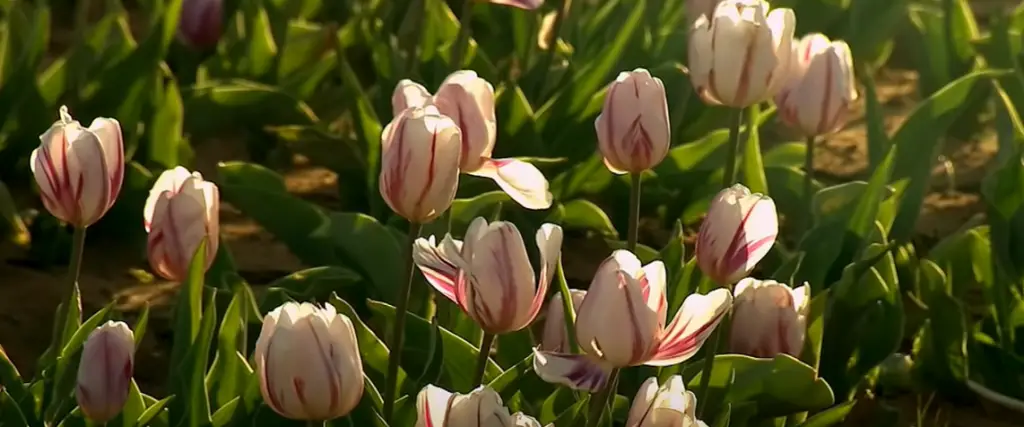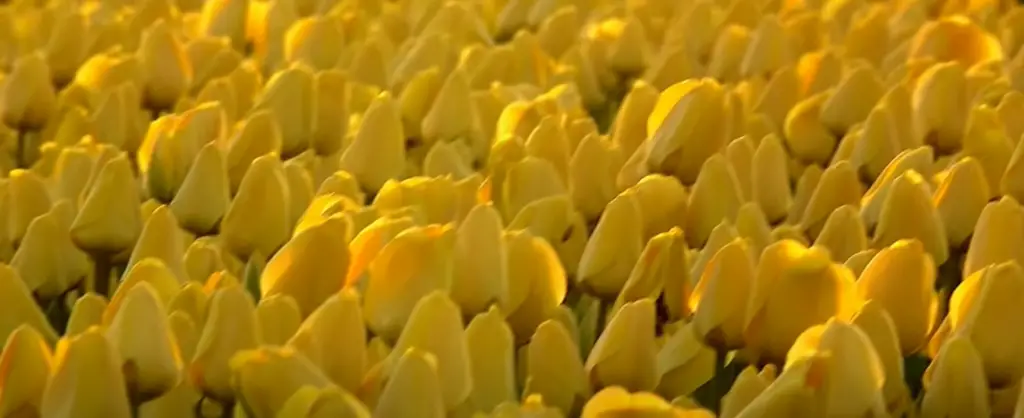When the temperatures start to dip and fall arrives, Texans know winter is just around the corner. For those looking to add some festive color to their gardens this season, planting tulip bulbs in Texas may be a great way to do it. Our state’s mild winters make it an ideal spot for planting all types of flowers, including tulips. But before you buy your bulb bag and break out your gardening tools, there are a few important things you need to know about when best to plant these vibrant springtime blooms in Texas. Read on for our workflow background information on when the ideal time is for planting tulip bulb beds in Texas!
What are the Pros and Cons of Tulips?
Tulips are a popular flower that can add beauty, color, and fragrance to any garden. They have been grown in many countries for centuries and are beloved by gardeners everywhere. However, there are a few things to consider when deciding whether tulips are the right choice for your yard or garden. [1]
Advantages:
- Tulips are one of the most popular flowers in the world, and for good reason. Not only are they beautiful and come in a wide variety of colors, but they also have a long lifespan and require minimal care.
- Tulips are one of the most beautiful and vibrant flowers, making them great for use in bouquets or as decorations.
- They come in a wide variety of colors and sizes, so they can be used to create stunning visual displays.
- Tulips do not require much effort to grow. They only need water and sun to thrive.
- Tulips are relatively inexpensive to purchase and maintain, making them a cost-effective way to add beauty to any garden or landscape.

Disadvantages:
- Tulips have a short bloom period. They will usually only bloom for a few weeks before they start wilting.
- They can be susceptible to diseases such as tulip fire if they are not taken care of properly.
- Tulips need to be planted in the right environment; they prefer cooler climates and may not do well in warmer areas.
- Tulips can easily become overcrowded, which can lead to poor blooming or wilting of the flowers.
- If left in the ground too long, tulips can be difficult to remove without damaging the bulbs. [2]
What Varieties of Tulips to Grow?
When it comes to tulips, there are hundreds of varieties that can be grown in a home garden. Depending on the region, some varieties may do better than others. Most types of tulips fall into these categories:
Single Late
Single late tulips are the most popular variety of tulip. They have one large flower that blooms in the late spring and grows in a single stem. Single late tulips come in many colors, including pink, white, yellow, red, and orange. They are perfect for small gardens or border plantings as they don’t take up much space. [3]
Double Late
Double late tulips have two large petals that bloom in the late spring and grow on a single stem. They come in many colors, including pink, white, yellow, red and orange. These flowers are perfect for larger gardens as they add more depth to an otherwise plain landscape.
Parrot Tulips
Parrot tulips are a unique type of tulip that has fringed petals and an array of colors. They bloom in the late spring and add texture to any garden. Parrot tulips come in shades of red, orange, pink, yellow and white. They are perfect for gardens with plenty of space as they require more room to spread out their colorful petals.
Triumph Tulips
Triumph tulips are a type of hybrid tulip that is known for its long blooming season and wide variety of colors. These flowers bloom in the late spring and summer, producing vibrant colors such as red, pink, yellow, white and orange. They are perfect for adding color to any garden or landscape all season long.

Viridiflora Tulips
Viridiflora tulips are a unique type of tulip that has green petals, and sometimes variegated petals. These flowers bloom in the late spring and add an unexpected touch of color to any garden. Viridiflora tulips come in shades of pink, yellow, white and orange. They are perfect for small gardens or border plantings as they don’t take up much space.
Gardening with tulips is an enjoyable way to spend time in the garden and create a beautiful landscape. With so many varieties of tulips to choose from, there is sure to be one that will fit perfectly into any garden. [4]
How to Select Tulip Bulbs?
Once you’ve decided to buy tulip bulbs for your garden, here are some things to consider when making the purchase:
- Choose bulbs according to size. Large tulip bulbs generally produce larger, more impressive blooms, but they require more space and take longer to bloom than smaller varieties.
- Select healthy-looking bulbs that are firm and heavy for their size. Soft or moldy bulbs should be avoided as they will not grow properly.
- Make sure the bulb has a strong stem and root base. This ensures the plant will be able to support itself once it has been planted in the ground.
- Check for signs of disease or pests on the bulb before purchasing. These can have a negative effect on the health of your bulbs and plants, so make sure they are pest and disease free before planting.
- Read up on different varieties of tulips before making your purchase. There are many different types and colors to choose from, so take the time to learn about them before you decide which ones to buy.
- Consider buying pre-packaged bulbs or a bulb with a variety pack for convenience. This will allow you to plant multiple varieties of tulips in one go without having to do extra research.
- Purchase bulbs from reputable sources to ensure you get the best quality possible. Buying tulip bulbs from trusted nurseries or garden centers is recommended as they will have the freshest and healthiest bulbs available. [5]

What are the Ways to Grow Tulips?
Tulips are a beautiful and popular flower that can be grown in many different climates. However, growing them successfully requires some special knowledge. Here are a few tips on how to grow tulips:
- Choose the right variety of tulips for your climate – Depending on the hardiness zone you live in, some varieties of tulips may do better than others in your area. Do some research to find out which types are best suited to your location.
- Plant bulbs at the right time – Tulip bulbs should be planted in late summer or early fall, when the soil is cool and wet. This will ensure that they have enough time to develop a good root system before winter sets in.
- Provide proper drainage – Tulips need good drainage in order to thrive. If your soil is heavy and clay-like, consider adding compost or organic matter to improve the texture and allow for better water absorption.
- Water regularly – It’s important to keep the soil moist but not soggy while the tulips are growing. Check on them weekly and give them a deep watering if needed.
- Fertilize – A balanced fertilizer should be used once every month during the growing season to ensure the tulips get enough nutrients to bloom properly.
- Deadhead – Once the tulip flowers are done blooming, deadhead them by removing the spent blooms from their stems. This will encourage more blooms later in the season and help keep the plants looking neat and tidy.
- Divide – After a few years, the tulips may become overcrowded and it will be necessary to divide them into smaller clumps. This is best done in early spring or fall when the foliage has died back. [6]
Is Texas Suitable for Growing Tulips?
Yes, Texas is suitable for growing tulips. The state’s warm climate and temperate soil make it a great environment for tulip bulbs to thrive in. Tulips require well-drained soil with lots of sun exposure and ample water during the spring when they are actively growing. Texas has plenty of these ideal conditions, making it an ideal place to plant and cultivate tulips. In addition, tulips can benefit from the humid climate during hot months when they are dormant, as well as protection from strong winds. With proper care and maintenance, Texas can be a great place to grow these beautiful flowers.
Texas is also home to several tulip festivals during the spring season, giving growers the opportunity to show off their beautiful blooms. The most popular of these include the Fort Worth Garden Club’s Tulip Festival in March and April, and the American Rose Center’s Tulip Extravaganza in April. Each of these festivals features displays of different tulip varieties, allowing visitors to choose the perfect variety for their own garden. [7]

When to Grow Tulip Bulbs in Texas?
Tulip bulbs are a popular flower choice in the state of Texas, but they require special considerations for successful growth. There is a limited window of opportunity for planting and growing tulip bulbs, as most varieties need to be planted in the fall and should not be exposed to temperatures below freezing. In general, bulb planting season in Texas runs from October through December.
To ensure successful tulip growth, gardeners should choose a sunny patch of well-drained soil and wait for the optimal planting time. Once this window arrives, bulbs should be planted around six inches deep with their pointed end facing up. Bulbs can also be planted closer together in small groupings to create a more dramatic display.
In Texas, tulips can bloom as early as February, depending on the variety. The blooms will start to fade in April or May, and gardeners should remove these flowers before they have a chance to go to seed. This will ensure that energy is conserved for the bulb’s continued growth and development.
At this point, gardeners can cut back stem foliage but should not remove it completely. The leaves will provide nutrients to the bulb as it enters its dormant phase in preparation for the next year’s growth. Fertilizing can also help strengthen bulbs during this period, though care should be taken to avoid over-fertilization which may cause bulb rot.
Tulip bulbs should be lifted from the soil in early summer to avoid any chance of them being exposed to extreme weather. The bulbs should be allowed to dry thoroughly before being stored in a cool and dark place until they can be replanted the following autumn. With these tips, Texas gardeners will have no trouble growing beautiful tulips in their own yards! [8]

FAQs
Do tulips come back every year in Texas?
Yes, tulips can come back every year in Texas as long as the bulbs are planted properly and given the necessary care. Planting tulips in spring helps them to establish themselves during the warmer months, allowing for them to come back again in subsequent years. It is also important to remember that some types of tulip bulbs will need to be replaced annually. However, once a tulip bulb is established in the soil, it can easily spread and become a beautiful display of color each spring. Texas gardeners can enjoy colorful displays of these popular flowers with just a little bit of effort.
What month do tulips bloom in Texas?
Tulips typically bloom in Texas from March to April, with some varieties blooming as early as February and lasting until May. The exact timing of the peak bloom period will vary depending on your location and the type of tulip you are planting. For example, Darwin Hybrids tend to bloom a bit earlier than other species, whereas parrot tulips tend to bloom later. There are also some varieties of tulips that will rebloom in the summer months, such as the Darwin Tulip and the Triumph Tulip. Additionally, it is important to remember that rainfall can significantly impact when tulips bloom each year. If there has been a lot of rain, you may see your tulips blooming earlier or later than usual.
Do tulip bulbs multiply?
Tulips are a type of bulb and, like other kinds of bulbs, they will multiply if left in the ground. When the tulip is done flowering, the stem will die back and a new set of leaves will emerge from the base of the plant. The original bulb then divides into multiple smaller bulbs that can be harvested and replanted for future blooms. For tulips to multiply, however, the bulbs must be planted in a rich soil that is regularly fertilized and kept moist during the growing season. With proper care, an individual bulb can produce up to five new plants each season.
It’s important to note that tulip bulbs are not like some other kinds of bulbs which grow much larger with age. Tulip bulbs tend to reach their maximum size within the first two years and will not grow any larger after that. This means that the process of multiplication must be done in order to keep the tulips blooming season after season.
Of course, if you don’t want to wait for your tulips to multiply by themselves, you can purchase additional bulbs from a nursery or online. This is a great way to ensure that you have plenty of blooms for your garden each season. Additionally, buying bulbs in the fall will give them more time to establish themselves before the growing season starts in the spring.
Can I plant tulips in January in Texas?
It is not recommended to plant tulips in January in Texas. Tulips are a cold-hardy bulb, and it’s best to wait until the soil temperature has dropped below 50 degrees Fahrenheit before planting them. In Texas this typically happens in late November or early December and the ideal planting time is usually after Thanksgiving. Planting during a warm spell can lead to poor root development and a shorter flowering period.
To ensure the best results from planting tulips in Texas, it’s important to choose a variety that is adapted to the local climate conditions. Certain hybrids of tulips are better suited for warmer climates and will hold up more reliably during droughts or periods of high heat that can occur in certain parts of Texas.
Useful Video: In the Garden with Dave Forehand: Planting Tulips for Dallas Blooms
Conclusion
In conclusion, planting tulip bulbs in Texas can be tricky due to the unique climate they require. If you decide to plant tulip bulbs, good timing is essential for success. Planting in late winter or early spring usually yields the best results. Make sure that you also choose the right location and soil quality as tulips prefer well-drained but not overly dry soil. Don’t forget to properly fertilize and water your bulbs, too! Once you have done all of these steps correctly, you can then relax and enjoy the beauty of the blooming tulips in your garden! Growing tulips is a fun hobby that doesn’t take too much effort but offers a stunning visual reward. So if you are looking for an interesting project this year, why not give growing tulip bulbs in Texas a go? With a bit of careful planning and effort, you will be sure to have a beautiful garden full of glorious colorful blooms!
References:
- https://tbrnewsmedia.com/tulip-trees-pros-and-cons/
- https://plantscraze.com/tulip-benefits/
- https://www.gardenia.net/genus/tulip-types
- https://www.allaboutgardening.com/tulip-varieties/
- https://hortnews.extension.iastate.edu/all-about-tulips
- https://www.gardenersworld.com/how-to/grow-plants/how-to-grow-tulips/
- https://aggie-hort.tamu.edu/newsletters/hortupdate/2008/oct08/Tulips.html
- https://www.floridayards.org/when-to-plant-tulip-bulbs-in-texas/










Leave a Reply
View Comments